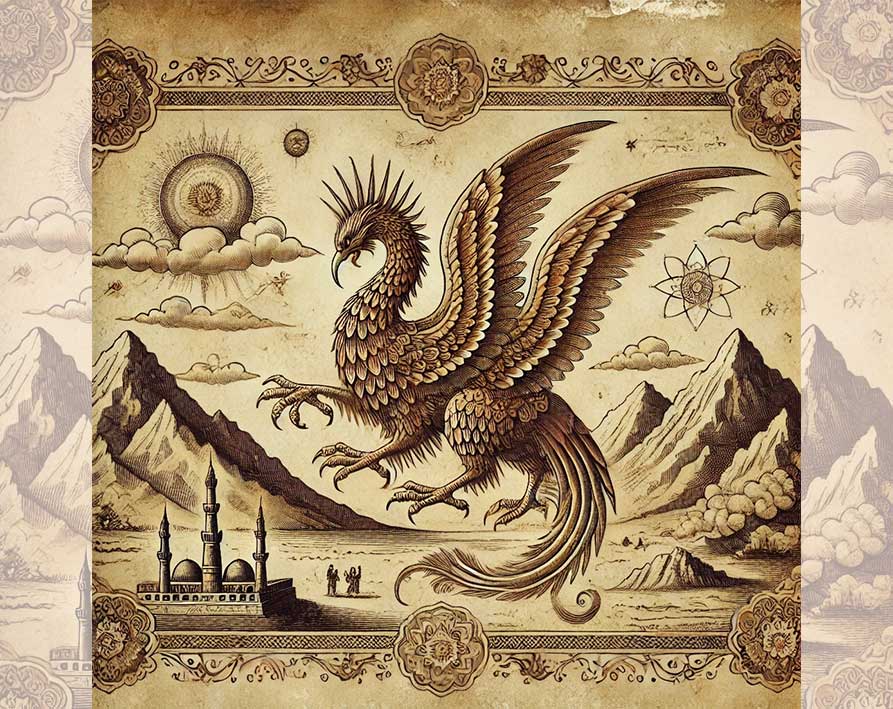The Anqa is a mythical bird from Arabian and Persian lore, often described as a massive, majestic creature that symbolizes both creation and destruction. It is said to have been created by God with a purpose but grew corrupt over time, ultimately becoming a symbol of misfortune.
Origin:
- Also known as: Simurgh (in some contexts), Rukh
- Origin: Arabian and Persian mythology
Key Figures:
- The Anqa: A powerful bird associated with knowledge and prophecy, yet later seen as a bringer of calamity.
- Prophet Solomon (Sulaiman): In some stories, the Anqa is linked to the court of Prophet Solomon, who could communicate with all creatures.
Themes:
- Duality of Creation: The Anqa represents both wisdom and destruction, showing how power can shift from good to evil.
- Divine Will: The bird’s fate is often tied to God’s plan, reinforcing themes of destiny and morality.
The Story:
According to one version of the legend, the Anqa was created by God as a perfect creature with immense knowledge. However, as time passed, it became arrogant and began causing harm, consuming all it pleased and bringing disaster wherever it flew. Eventually, God commanded the Anqa’s extinction, erasing it from the world. In some Persian interpretations, the Anqa is linked to the Simurgh — a wise and benevolent bird — though the two creatures’ natures diverge.
Significance:
The Anqa serves as a cautionary tale about the corrupting nature of power and the delicate balance between creation and destruction. It reflects a broader theme in Middle Eastern mythology: that even divine beings can fall from grace.
Similar Tales:
- Simurgh: A more positive counterpart in Persian mythology, often depicted as a guardian of wisdom and healing.
- Rukh (Roc): A giant bird in Arabian lore, sometimes confused with the Anqa, known for its immense size and strength.
Sources:
- The Conference of the Birds by Attar of Nishapur
- References in classical Arabic literature and Persian poetry

